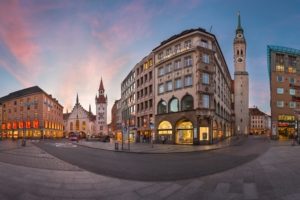Addressing Homelessness Through Architectural Design

Around the world, there are an estimated 150 million people homeless. Even more striking, 1.6 billion lack access to safe and secure housing. Exact rates of homelessness are difficult to pin down due to unstandardized definitions. This means that even more people may lack adequate housing than statistics show. Solving homelessness is a complex problem that requires a multi-faceted solution. Many think of building homes as a first measure and, though this can be a viable short-term solution, architecture has a much larger role to play. There are both negative and positive consequences of addressing homelessness through architectural design.
Architecture That Alienates
Park benches and city sidewalks are commonplace for most. However, for many, these communal spaces are isolating. Over the years, the terms “hostile,” “anti-homeless” and “defensive” architecture have become popular ways to describe architecture intended to prevent homeless populations from using items or spaces. Examples of hostile architecture include benches with multiple armrests or odd shapes and metal or concrete spikes on sidewalks.
These designs are used to prevent people from sleeping on the structures and many cities employ them as temporary solutions to homelessness. However, there is little evidence that these designs are helpful in the long run. It is actually less expensive to house the homeless. Homelessness is associated with greater health costs that can be reduced with adequate housing. Hostile architecture hides the problem of homelessness rather than addressing its root causes. These structures not only affect homeless populations but can also limit access for the elderly and disabled. In this way, addressing homelessness through architectural design only alienates the homeless from public spaces and makes communities less cohesive, as a whole.
Anti-Hostile Architecture
Still, architecture has the potential to be more inclusive. RainCity Housing tackles housing issues through a variety of programs. The organization, based in Vancouver, received attention for its bench campaign in which public benches were converted into temporary shelters with expandable roofs to protect sleepers from inclement weather.
The benches raise awareness against anti-homeless designs and provide temporary shelter for those in need. However, as evidenced by the inclusion of RainCity Housing’s address on the benches, the organization is also focused on more permanent solutions. Among its many programs are overdose prevention sites, peer witnessing programs and supportive housing shelters.
Across the ocean, the German Ulmer Nest team of designers launched a pilot project of solar-powered sleeping pods. Designed with the cold, winter months in mind, these pods provide a quick place to rest. They are waterproof and lock from the inside. Additionally, a social worker is alerted when the pods are used, allowing for cleaning after the person leaves. The pods are meant to be last-resort options for those who may not have access to shelters; a starting point to get people into real housing.
Inclusive Interiors
Interior design is not to be overlooked. Poverty and homelessness are strongly associated with mental health issues. Living without stable housing is correlated with greater psychological distress that can affect multiple generations. Research shows that interior designing such as lighting and decorations can have psychological effects. With this in mind, interior spaces can be designed to provide the homeless with a sense of dignity. Poorly designed shelters can exacerbate negative outcomes. Many express discomfort with sleeping in open rooms with groups of strangers and unsanitary conditions drive others away. Shelters should promote a sense of safety, conducive to recovery. This may include calming paint colors and lighting, incorporation of plant life and inclusive layouts.
Architects Building a Better Future
Chris Hildrey, architect and founder of ProxyAddress, says that “architects have a duty to use their skills to help solve societal problems even if it means thinking beyond designing buildings.” Shelters and emergency housing are useful short-term initiatives. However, architects have the power to contribute to more long-term solutions.
The “housing first” model focuses on providing stable housing as a first priority. Other models require people to qualify for housing by undergoing mental health programs or proving they can live independently. Housing is dispersed throughout neighborhoods, avoiding the overcrowding often associated with shelters. Results of this model show that it leads to greater retention of housing and reduced health costs. The model started in the United States but has since been implemented in other regions such as Europe where it is supporting homeless women and youth.
Yasmeen Lari is another architect addressing homelessness through architectural design. The 82-year-old Pakistani architect, who won the 2023 Royal Gold Medal for architecture, champions indigenous building methods to help marginalized populations. Her Barefoot Social Architecture (BASA) philosophy involves displaced people first-hand in the architectural process. It provides training programs to teach people to build sustainable and affordable housing. These skills can be used to gain income, helping communities become self-sustaining.
Addressing homelessness through architectural design does not stop at building houses. Architects can facilitate the creation of more inclusive private and public spaces while promoting financial independence.
– Yesenia Aguilera
Photo: Unsplash
